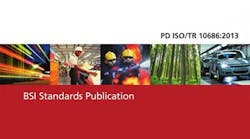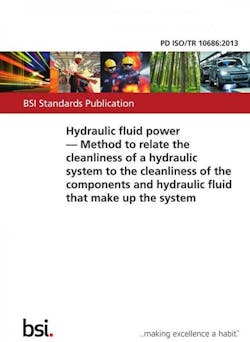“Hydraulic Fluid Power— Method to Theoretically Relate the Cleanliness of a Hydraulic System to the Cleanliness of the Components and Hydraulic Fluid That Make Up the System,” includes methods that can be used to:
- relate the cleanliness of a hydraulic system to the cleanliness of its components and the hydraulic fluid belonging to the system
- estimate the final cleanliness level of an assembled hydraulic system
- calculate and manage cleanliness requirements of components and subassemblies
Abstract:
ISO/TR 10686:2013 describes methods that can be used to: relate the cleanliness of a hydraulic system to the cleanliness of its components and the hydraulic fluid belonging to the system; estimate the final cleanliness level of an assembled hydraulic system filled with the hydraulic fluid, upon its release from the manufacturing area (the estimation of the final cleanliness level is based on the cleanliness level of each component in the system and on the cleanliness level of the filling fluid); calculate and manage cleanliness requirements of components and subassemblies that make up a system and of the fluid filling it so as to achieve a required cleanliness level (RCL) for the final system. These methods can apply whatever the particle size considered and can also be used for other types than hydraulic fluid power.
List price for the standard is $139.00, and $110 for NFPA members.
Click here for more information, or click here to order.


